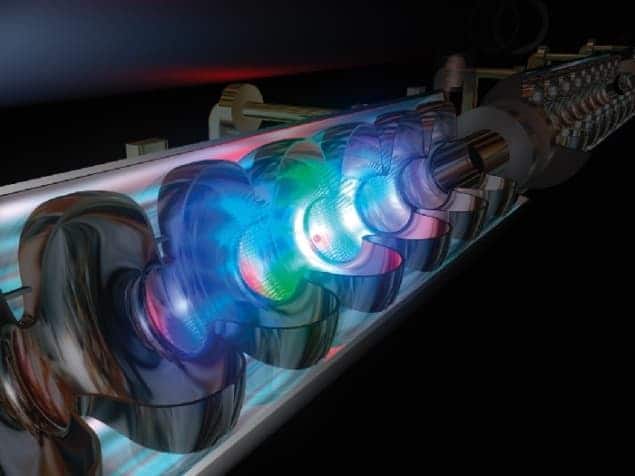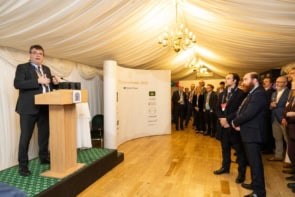
Physicists have written to the UK’s science minister, Lord Drayson, about the “dismal future” for researchers in the UK following cuts announced by a leading UK funding agency last month. They warn that unless the government takes action to reverse the situation the UK will be “perceived as an untrustworthy partner in global projects”, and that there will be a brain drain of the best UK scientists to positions overseas.
The cuts were made on 16 December by the Science and Technology Faculties Council (STFC), which announced that the UK will be forced to withdraw from over 25 leading international projects in astronomy, nuclear physics, particle physics and space science. The cuts – brought about by a £40m shortfall in STFC funding – would also lead to a 25% cut in the number of STFC studentships and fellowships over the next five years, as well as a 10% reduction in support for “future exploitation grants”.
Now, in an unprecedented step, the five chairs of the STFC’s advisory panels, which represent the members of the UK’s particle physics, nuclear physics, astronomy and space physics communities, have written to the science minister to express their concern about the STFC’s budget and the damage it could cause to the UK.
Throwing in the towel
“We are throwing in the towel with regard to investing in future forefront science projects without getting any return on this investment,” says Philip Burrows from the University of Oxford, who is chair of the STFC’s particle-physics advisory panel and project manager of the UK’s involvement in a next-generation linear collider. The other four authors are Michele Dougherty from Imperial College London (near-universe advisory panel), Martin Freer from the University of Birmingham (nuclear physics), Philip Mauskopf from Cardiff University (particle astrophysics) and Bob Nichol from the University of Portsmouth (far universe).
In the letter, the authors say that the STFC “cannot continue to stagger between financial crisis on an almost annual basis”, and warn that the funding council is “structurally incapable of managing both an internationally leading fundamental science programme and domestic facilities that are used primarily by scientists funded by other research councils.”
The cuts would end support for five astronomy projects including the Auger telescope in Argentina and the UK Infra-Red Telescope as well as nine projects in particle physics including some work preformed at the Boulby mine, the UK’s contribution to the CDF and D0 experiments at Fermilab, and plans for a UK neutrino factory.
Managed withdrawal
In nuclear physics, the STFC will phase out its support for the AGATA and PANDA experiments at the GSI heavy-ion laboratory in Darmstadt, and also ALICE at CERN, while the UK will pull out of five space missions – Cassini, Cluster, the Solar and Heliospheric Observatory, Venus Express and XMM-Newton – saving the STFC £42m over five years.
In addition to the “managed withdrawal” in programmes that currently have funding, the STFC has also zeroed out funding for research and development into new accelerator and detector technology that, for example, could affect the UK’s involvement in the International Linear Collider (ILC) – the next big particle physics experiment after the Large Hadron Collider at CERN.
Burrows and colleagues call on the government to take action against the budget cuts otherwise the UK’s international reputation will be harmed and the UK will find it hard to attract overseas researchers. They warn that as a consequence the quality of research performed at UK universities, which they say is essential for the UK’s economic future, will be heavily reduced.
We need a national laboratory
Indeed, the STFC has indicated it will be unable to participate in an upgrade to the LHCb detector at CERN, research into a Super B factory that will aim to produce copious amounts of B mesons, and an upgrade for the neutrino experiment at J-PARC in Japan. Burrows, who leads a team of five PhD students and two postdocs that carry out research into linear colliders, currently has funding until 2011 but will now have to start winding down the work they do. “As things stand we will have to look for opportunities in other areas,” he says.
The authors of the letter now call for the structural problems at the STFC to be addressed. This, says Burrows, could involve removing the exposure the STFC’s budget has to foreign-exchange fluctuations through its memberships of European projects such as CERN. Burrows also says that it could be possible for a separate funding council, or as he puts it a “national laboratory”, to be formed to support big facilities such as the Diamond synchrotron and the ISIS neutron scattering centre that are used by scientists across many disciplines.
Lord Drayson, the UK’s science minister, and Michael Sterling, chair of the STFC, will be looking to address the STFC’s structure when they meet later this month and an announcement is expected to be made by the end of February.



